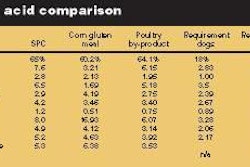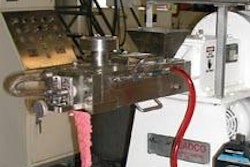Today, we are bombarded with information about lean; what it is and about what lean tools can do. Still, there is very little practical information on how to implement lean transformation and lead the change. Every company's lean journey starts under different circumstances, so there can be no one recipe, no "right way." But, to ensure success, there are many factors to consider before embarking on your lean journey.
Why is it that such a low percentage of companies that know about lean turn it into a success? It's not because they haven't heard about continuous flow, or they don't know how to do the 5Ss or they've never seen a kaizen workshop. It is because the leadership, cultural, organizational and implementation challenges are much greater than they anticipate.
Someone, to whom I would give credit if I could, said wisely, "experience is not what you've been through; it's what you take from it." The fundamental message is that every success and failure should yield as much learning as you can wring from it. Focusing at all times on what makes lean transformations successful, we've compiled the following top ten lessons.
1 Rome wasn't built in a day.
And neither will be your lean transformation. Lean is not a one- or two-quarter commitment. It takes one to two years to build the necessary momentum, and from there your journey will last forever. Yes, tools such as kaizens can provide very quick and significant improvement. But, without taking the time to implement a program that yields sustainable benefits, process improvements gained by lean tools will slowly deteriorate back to where you started. Significant and sustainable results will occur throughout the entire process, but the most profitable returns are realized through a 2-5 year plan.
2 Lean transformation is not a part-time job.
Don't expect someone to lead the lean charge in his/her spare time. You need to assign a dedicated leader or team to take on this challenge. It requires daily attention from leaders who fully understand the scope of the project and who won't get caught up in today's distractions. Most cultures are centered around solving today's problem, reacting faster and better and getting results today or tomorrow. Stuck in that culture, it is hard for leaders to consider a multi-year journey; people need to be extracted to focus on a different timeline. In addition, these leaders require continued support from management throughout the implementation. You don't have to start big, but make the commitment; it will pay dividends.
3 Lean is more than just tools
Lean is not born from what you see, it is born from how you think. Lean is a set of rules and principles, not just tools. Tools focus on physical system changes, but that is not where the heart of lean beats. The entire way of thinking must become embedded in every person of your organization. You may fix one problem or process with a lean tool today, but if the old thinking continues, it will recreate the old problems. Only new principles or beliefs change behaviors, not systems or tools. Sustainable lean changethe kind that builds momentumcomes from the mind and heart of all employees.
4 Lean is a journey that never ends.
There is a tendency for companies to declare "we've done it. We've achieved lean." The truth is, lean is a constant, never-ending process. You will always strive to be lean, but you will never get there, because there is always a gap between where you are and your ideal state. If you believe that your journey has ended, you've failed. Even when you can consider yourself a success, do not stop. Success is an organization that continues to move forward at such a pace that it would be difficult to even try to slow it down.
5 Be prepared for resistance.
When change is proposed, people often feel threatened. Some will think it's because there has been something wrong with what they were doing, but most will just be uncomfortable with the unknown. So, as your company embarks on this journey, you must work to help people understand why, what and how. Remove the fears, or make NOT moving forward the more fearful choice. Also, many people think lean means cutting staff, when in reality it's about working smarter to preserve heads and even grow the workforce through market growth.
6 You need leaders to take on this challenge, not managers.
Managing is maintaining current reality. Leadership is moving people towards the ideal state. And you can't lead people to where they already are. Lean transformation is about leadership. And leadership is not a position or rank. Look for people at every level of the enterprise capable of this. If lean is about transforming thinking, then in order to lead lean, you must be able to teach.
7 Be prepared for the investment.
People will need to learn new skills and they will need the time to gain them. This means experimenting with every process everyday to get it right. There is also a financial investment, mostly in training, but also in process changes. However, the evidence is clear that the payback for this period is in months and not years. You can use focused improvement tools such as kaizens to get immediate gains and pay for your investment. The potential of difference between lean and non-lean companies is not 5-10%, it is 100-1000% differences in quality, cost, delivery and, of course, profit.
8 Lean is not just about the shop floor.
Taiichi Ohno, one of the fathers of the Toyota Production System, said decades ago that "the Toyota Production System is not just a production system." If you reduced your lead time in manufacturing by 90% and can get product out in hours, but order entry takes four weeks, then you aren't really moving forward in the market. You must attack every corner of the business from accounting to human resources to manufacturing.
9 There is no recipe, but there is a roadmap
A recipe tells you exactly how to do something: the amounts, sequence and timing. There is no such recipe for lean success since every company starts with a different set of ingredients (or factors and constraints). However, there is a roadmap. There are guide posts along the way that help you determine where you are and offer potential solutions to help you get to where you want to go. Learn from as many other journeys as possible to help understand the roadmap.
10 Don't just copy the answers.
Many people have tried to succeed at lean in the past by copying the solutions that Toyota or others have found, either through benchmarking or out of a book. The problem is, this is like a kid copying off someone else's test only to find out they were taking a different exam. Your company is unique and will likely have some unique problems and constraints; you must engrain lean thinking in your organization so you can find your own answers.
Never stop collecting the lessons you learn along your path to lean. Lean transformation is a long journey that will require you to collect experiences and reflect upon each and every lesson you learn along the way.















